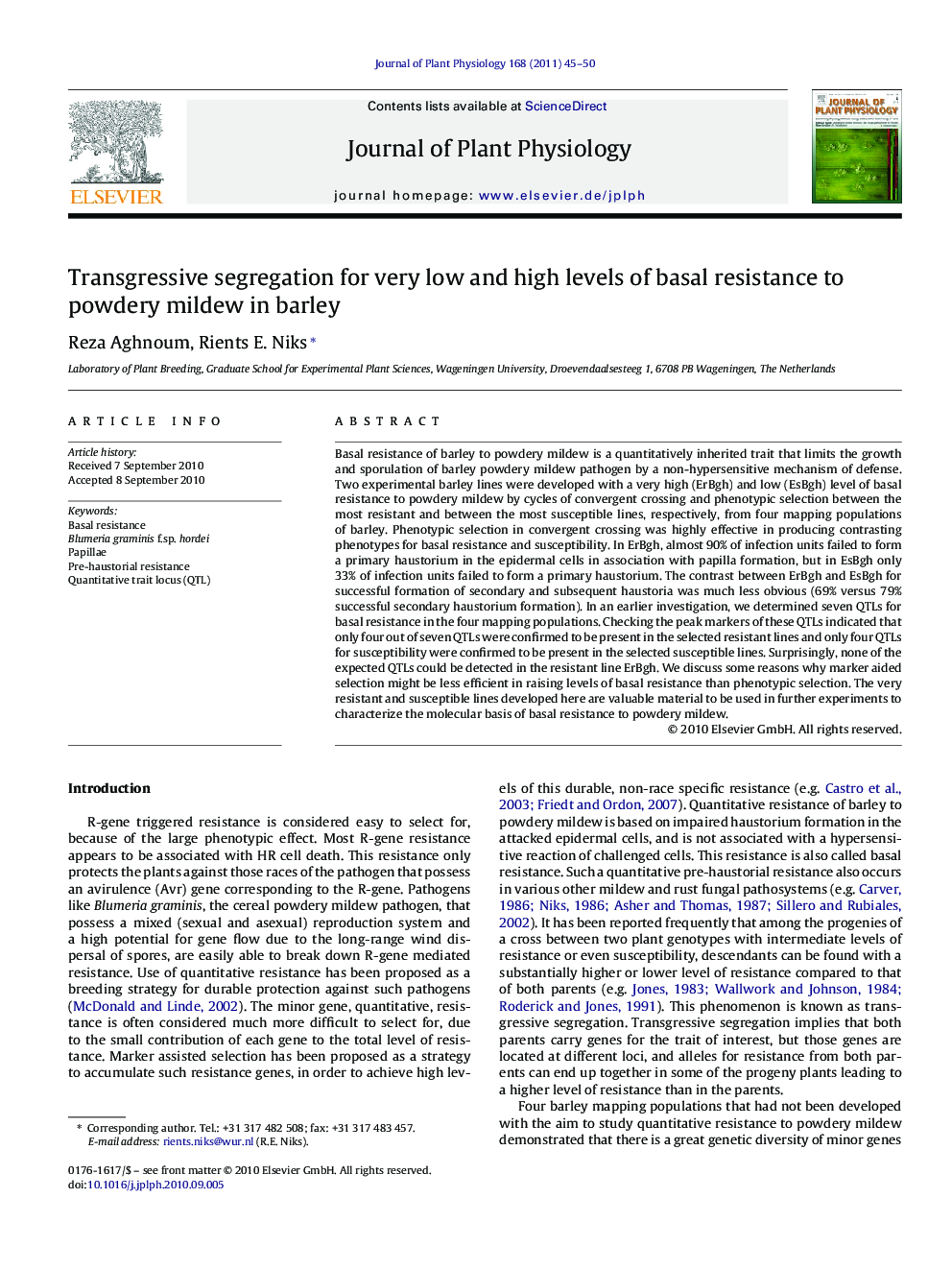| Article ID | Journal | Published Year | Pages | File Type |
|---|---|---|---|---|
| 2057798 | Journal of Plant Physiology | 2011 | 6 Pages |
Basal resistance of barley to powdery mildew is a quantitatively inherited trait that limits the growth and sporulation of barley powdery mildew pathogen by a non-hypersensitive mechanism of defense. Two experimental barley lines were developed with a very high (ErBgh) and low (EsBgh) level of basal resistance to powdery mildew by cycles of convergent crossing and phenotypic selection between the most resistant and between the most susceptible lines, respectively, from four mapping populations of barley. Phenotypic selection in convergent crossing was highly effective in producing contrasting phenotypes for basal resistance and susceptibility. In ErBgh, almost 90% of infection units failed to form a primary haustorium in the epidermal cells in association with papilla formation, but in EsBgh only 33% of infection units failed to form a primary haustorium. The contrast between ErBgh and EsBgh for successful formation of secondary and subsequent haustoria was much less obvious (69% versus 79% successful secondary haustorium formation). In an earlier investigation, we determined seven QTLs for basal resistance in the four mapping populations. Checking the peak markers of these QTLs indicated that only four out of seven QTLs were confirmed to be present in the selected resistant lines and only four QTLs for susceptibility were confirmed to be present in the selected susceptible lines. Surprisingly, none of the expected QTLs could be detected in the resistant line ErBgh. We discuss some reasons why marker aided selection might be less efficient in raising levels of basal resistance than phenotypic selection. The very resistant and susceptible lines developed here are valuable material to be used in further experiments to characterize the molecular basis of basal resistance to powdery mildew.
